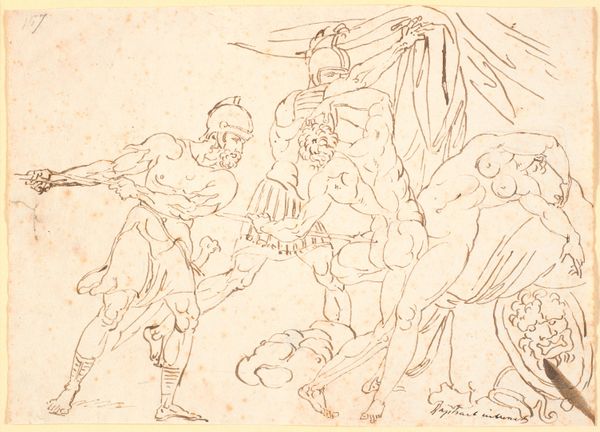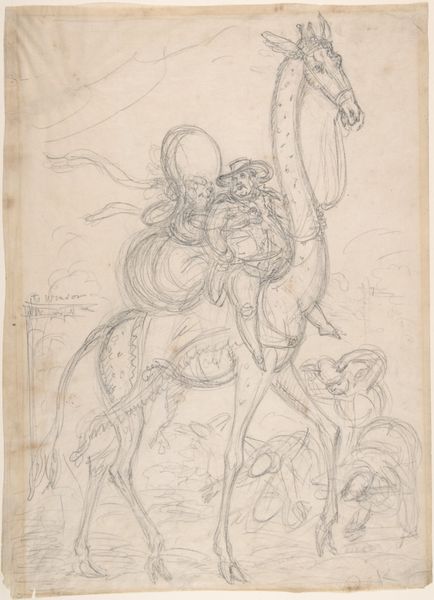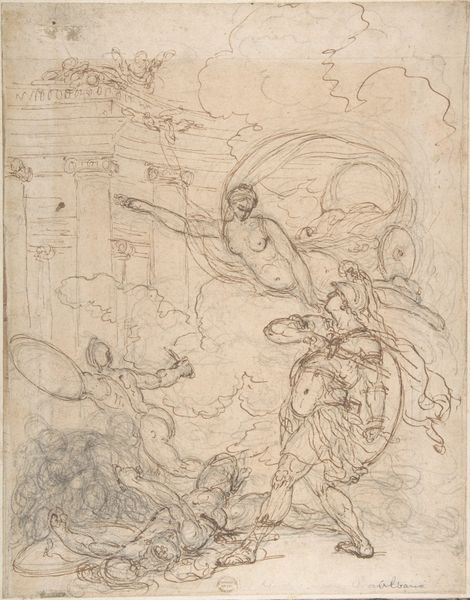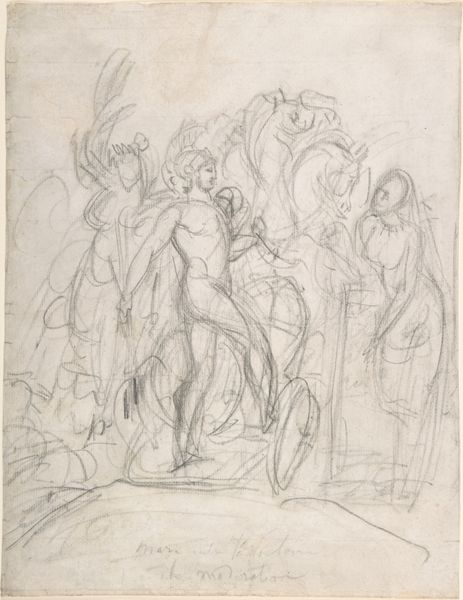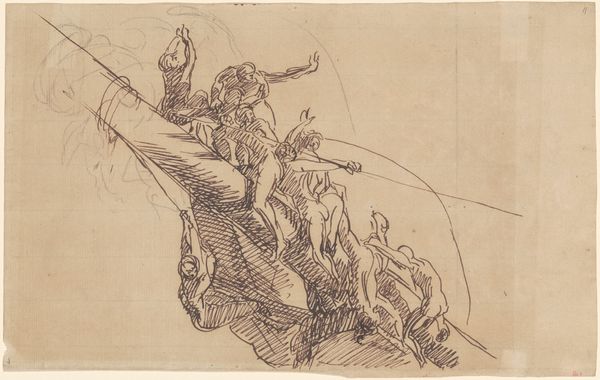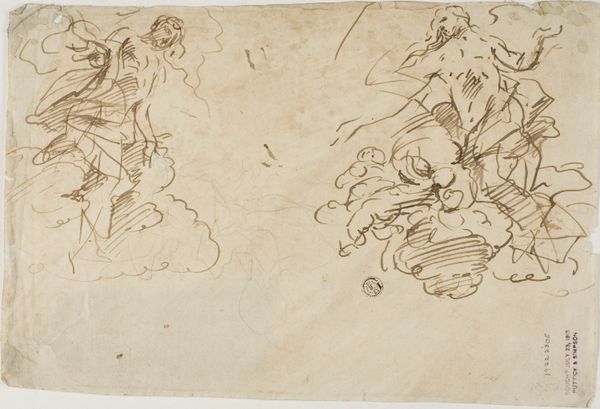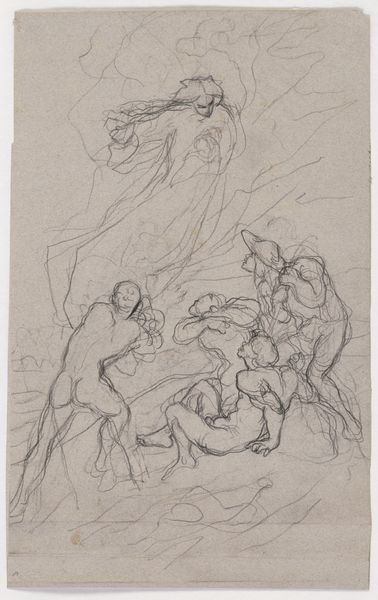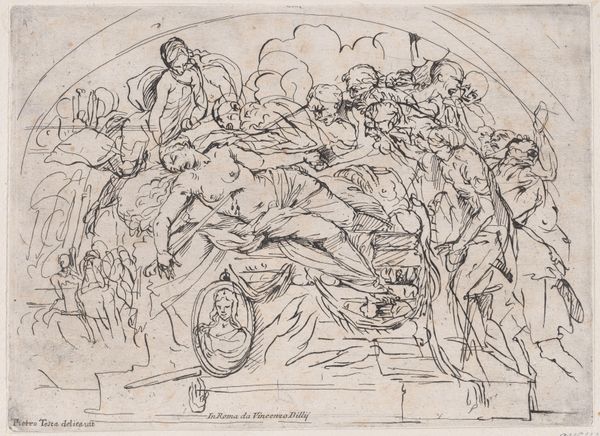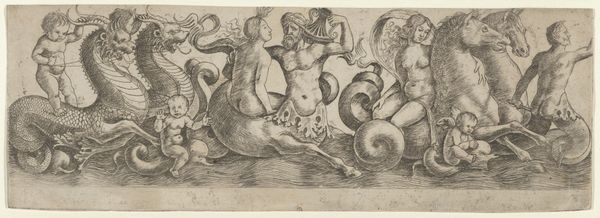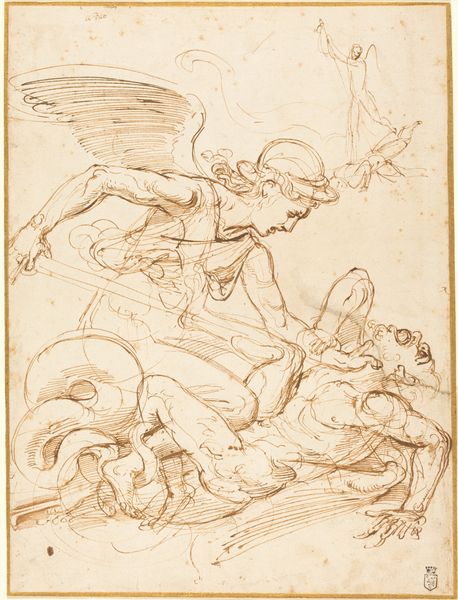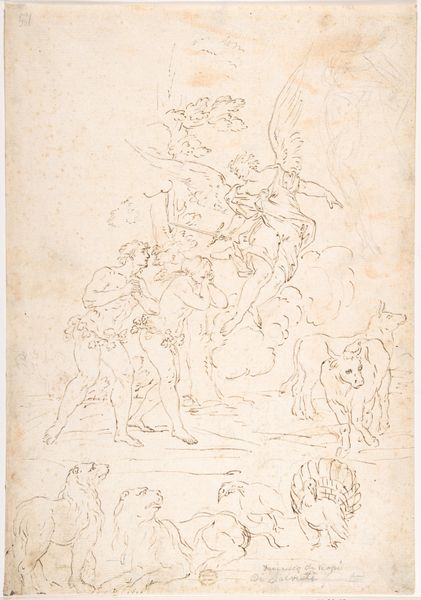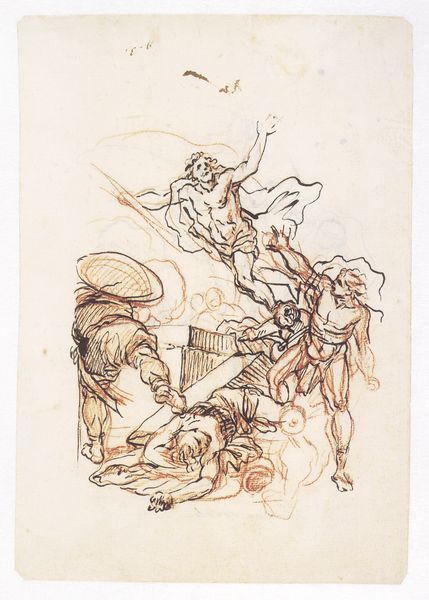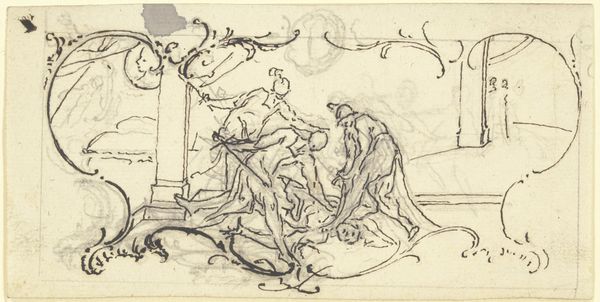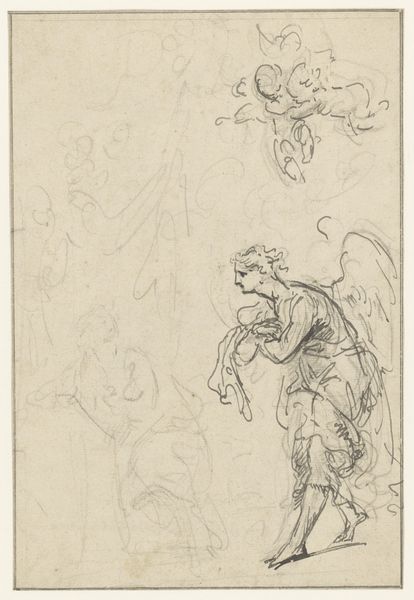
drawing
#
drawing
#
narrative-art
#
landscape
#
figuration
#
history-painting
#
academic-art
Dimensions: sheet: 38.3 x 30 cm (15 1/16 x 11 13/16 in.)
Copyright: National Gallery of Art: CC0 1.0
Curator: What strikes me immediately about this drawing is the palpable sense of anxiety, of impending doom, evoked by the frantic figures sketched at the bottom. The sketchy quality amplifies this sense of urgency. Editor: It's Joseph Anton Koch's "Dante and Virgil Riding on the Back of Geryon," made around 1821. Koch was deeply engaged with the classical tradition and frequently drew from literary sources. Here he is illustrating a scene from Dante’s *Inferno*. I think a historical understanding of its imagery informs our experience of the composition. Curator: Absolutely. Look at Geryon, a winged monster with reptilian features. Koch is reimagining it here not merely as a beast but as a kind of...patriarchal tyrant. Look at that face! His is carrying Dante and Virgil through the air to transport them to the next level of hell; I’m compelled to think of how figures in authority carry other figures toward their oppression. Koch presents Geryon's grim features crowned, almost divine— but monstrous. Editor: Koch’s engagement with Dante coincided with his broader work situated in the Romantic movement. His art emphasized intense emotional and subjective experiences. This piece speaks directly to the visual and symbolic interpretation of a religious canon. The work engages questions about hell, divinity, humanity, power. The bodies writhe as if under its inescapable command. Curator: The lower scene depicts souls trapped within Malebolge, the eighth circle of hell, suffering torments reflective of their sins. But the nakedness here isn't innocent, is it? It carries so much weight, historical meaning of objectification and vulnerability. Editor: Koch's work helped to establish a heroic landscape tradition rooted in idealized natural forms, imbued with symbolic meaning. His drawings especially allowed him to freely explore themes of man's relationship to nature, morality, and the divine order as he re-imagined religious stories. And as these prints circulated throughout Europe, Koch's art furthered Dante's *Inferno*’s standing in popular visual culture. Curator: It gives us, now, a lens through which to consider what it means to depict moral depravity; the question of how our sins materialize, and who dictates their consequence, remain powerfully at stake. Editor: Indeed. And it prompts us to question how the artwork participated in and shaped early nineteenth century thought on divine law, secular society, and visual representation of the time, which is still a question for contemporary artwork today.
Comments
No comments
Be the first to comment and join the conversation on the ultimate creative platform.
